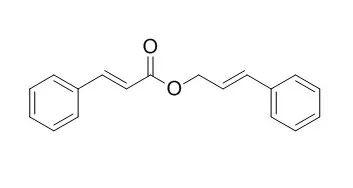The antibacterial activity of propolis from different regions of Turkey was studied, accompanied by TLC and GC-MS analyses of its chemical composition and spectrophotometric quantification of the most important active principles.
METHODS AND RESULTS:
All six samples were active against the bacterial test strains used; however, samples 1 (Yozgat), 2 (Izmir) and 3 (Kayseri) were more active than samples 4 (Adana), 5 (Erzurum) and 6 (Artvin). By TLC comparison all samples were found to contain poplar taxonomic markers but in samples 4 (Adana), 5 (Erzurum) and 6 (Artvin), different substances were observed, which were not present in P. nigra L. bud exudate. The typical poplar samples 1 (Yozgat), 2 (Izmir) and 3 (Kayseri) displayed very similar phenolic and flavonoid content. Samples 4 (Adana), 5 (Erzurum) and 6 (Artvin) were characterized by low phenolic and very low flavonoid concentrations. Qualitative analysis by GC-MS revealed that sample 4 (Adana) contained diterpenic acids and high percent of Cinnamyl cinnamate, sample 5 (Erzurum)-significant amounts of hydroxy fatty acids and triterpenic alcohoLs, and sample 6 (Artvin)-phenolic glycerides, characteristic for the bud exudate of Populus euphratica Oliv.
CONCLUSIONS:
The results confirm the importance of phenolics for propolis antibacterial activity, and the significance of P. nigra L. as a propolis source, which provides the hive with the best defense against microorganisms. |






 Cell. 2018 Jan 11;172(1-2):249-261.e12. doi: 10.1016/j.cell.2017.12.019.IF=36.216(2019)
Cell. 2018 Jan 11;172(1-2):249-261.e12. doi: 10.1016/j.cell.2017.12.019.IF=36.216(2019) Cell Metab. 2020 Mar 3;31(3):534-548.e5. doi: 10.1016/j.cmet.2020.01.002.IF=22.415(2019)
Cell Metab. 2020 Mar 3;31(3):534-548.e5. doi: 10.1016/j.cmet.2020.01.002.IF=22.415(2019) Mol Cell. 2017 Nov 16;68(4):673-685.e6. doi: 10.1016/j.molcel.2017.10.022.IF=14.548(2019)
Mol Cell. 2017 Nov 16;68(4):673-685.e6. doi: 10.1016/j.molcel.2017.10.022.IF=14.548(2019)